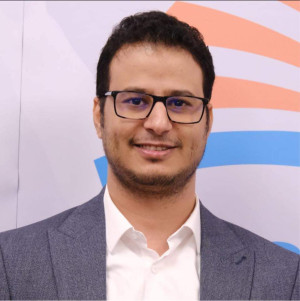Geometry of Influence: How US-Russian Rapprochement Is Redrawing Middle East’s Map
- 07 Apr 2025


The Middle East has long been a theater of great-power competition, where shifting geopolitical dynamics continuously reshape traditional alliances. In this volatile landscape, the concept of the "butterfly effect," borrowed from chaos theory, provides a compelling framework: seemingly minor shifts at the global level can trigger far-reaching consequences. The evolving diplomatic rapprochement between Washington and Moscow generates ripple effects, subtly altering the balance of power in Tehran, Sana’a, and Beirut. As the contours of influence shift, the regional map of alliances and conflicts is redrawn.
Trump’s Grand Deal: Bartering Interests
Since his return to the White House in January 2025, U.S. President Donald Trump has prioritised three key foreign policy objectives: Gaza, Ukraine, and Iran. His approach remains characteristically transactional, grounded in direct exchanges of strategic interests among significant powers:
Ukraine: By pressuring Kyiv and European allies, Trump is facilitating an outcome that tilts in Moscow’s favour, potentially securing a face-saving resolution for Russia.
Iran: In return, Moscow is exerting leverage over Tehran, pressing it to make concessions on its nuclear ambitions and regional activities.
Israel: Trump offers unwavering support to Israel but demands strategic alignment, discouraging unilateral actions that could disrupt the broader geopolitical calculus.
This realignment represents the essence of what Trump envisions as a "New Deal of the Century"—a pragmatic redistribution of regional influence dictated by a cold calculus of interests, detached from ideological commitments or traditional rhetoric.
Moscow Pressures Tehran: Early Signs of Success
There are growing indications that Trump’s strategy is beginning to yield tangible results. Moscow has positioned itself as a mediator on the Iranian nuclear issue, signaling a shift in its regional engagement. However, Supreme Leader Ali Khamenei and Iranian President Masoud Pezeshkian have voiced reservations, reflecting uncertainty within Iran’s ruling elite.
Emerging reports suggest that Moscow is intensifying pressure on Iranian policymakers, mirroring Trump's leverage on Ukrainian President Volodymyr Zelensky. This tacit coordination between Washington and Moscow signals a profound realignment in global power dynamics, leaving Tehran in an increasingly precarious position.
Internal Turmoil: The Struggle between Power Factions in Iran
External pressures appear to be exacerbating internal divisions within Iran, deepening the power struggle between two dominant factions:
This struggle has been underscored by the sidelining of key reformist figures, including Mohammad Javad Zarif and Abdolnasser Hemmati. The balance of power increasingly tilts in favor of the hardliners, who prioritise confrontation over compromise.
Regional Implications: The Houthis at the Forefront
These internal and external shifts have swiftly reverberated across Tehran’s regional alliances, with the Houthis in Yemen emerging as the first to react. In a sudden escalation, the group’s leader, Abdul-Malik al-Houthi, issued a four-day ultimatum to Israel, demanding the lifting of the Gaza blockade or facing attacks on international shipping.
This move reflects the Revolutionary Guards’ broader strategy to reclaim the regional initiative following setbacks suffered by the axis of resistance in Syria and Lebanon. With Yemen offering a lower-risk theater for confrontation compared to other fronts, the Houthis have become a key instrument in Tehran’s bid to reassert influence in the region.
Tehran’s Dilemma: Caught Between Two Bitter Choices
Iran’s leadership finds itself trapped in a complex strategic dilemma:
Convergence of Interests: When Adversaries Align
Paradoxically, the Revolutionary Guard and Israel appear to share a mutual interest in military escalation. For Tel Aviv, heightened Houthi aggression provides justification to intensify its military campaign in Gaza. Meanwhile, the Revolutionary Guard views regional escalation as a means to consolidate its domestic grip and deter existential threats to the Velayat-e Faqih —or guardianship of the Islamic jurist— regime.
Yet, a controlled escalation is unlikely to alter the broader strategic equation. Iran today is weaker than in previous years, and the Axis of Resistance faces unprecedented constraints that make large-scale military confrontations increasingly risky.
Conclusion
The US-Russian rapprochement has ushered in a new geopolitical reality—one where, for the first time, Iran finds itself diplomatically encircled by its allies rather than its traditional adversaries. As these shifts unfold, the regional balance of power is being recalibrated along pragmatic lines, where transactional alliances replace ideological commitments.
What is unfolding is not merely a tactical adjustment but a fundamental redrawing of the Middle East’s strategic map—a transformation driven by the logic of grand bargains, where self-interest dictates alignments, and traditional loyalties give way to a new order that could define the region’s trajectory for decades to come.
The stated views express the views of the author and do not necessarily reflect the views of the Center or the work team.
Comments